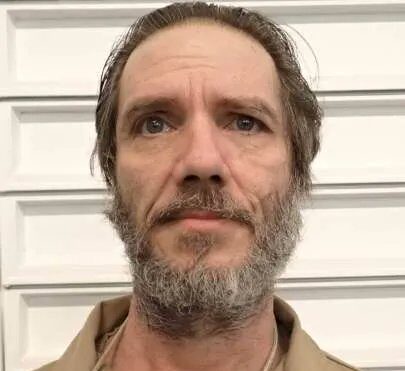James Osgood, 55, was executed by lethal injection on Thursday evening at a prison in southern Alabama after voluntarily ending his appeals process and insisting that he deserved to die for his crimes. Osgood, who was convicted in 2014 of the rape and murder of 44-year-old Tracy Lynn Brown, had written to his lawyer last year requesting that an execution date be set as soon as possible.
“I am guilty of murder,” James Osgood told the Associated Press in a recent interview. “I took a life, so mine was forfeited. I don’t believe in sitting here and wasting everybody’s time and everybody’s money.” His death was pronounced at 6:35 p.m. CDT, making him the second person executed in Alabama this year and the 14th in the United States in 2025.
Osgood’s case drew national attention not only for the brutality of the crime but also for his unwavering insistence on accepting responsibility. His actions and words stood in stark contrast to the often lengthy and contested appeals that characterize most death penalty cases.
The Crime: A Brutal and Calculated Attack by James Osgood
In October 2010, Tracy Lynn Brown was found dead in her Chilton County home after failing to show up for work. The details that emerged were chilling. James Osgood and his then-girlfriend, who was also Brown’s cousin, had shared disturbing fantasies about kidnapping and torturing someone. According to prosecutors, they carried out those fantasies by sexually assaulting Brown at gunpoint before Osgood slit her throat, killing her.
Police said James Osgood confessed to the crime, and in 2014, a jury found him guilty of capital murder after just 40 minutes of deliberation. They unanimously recommended the death penalty. His girlfriend was sentenced to life in prison.
Osgood expressed regret in his final days. “I regret taking her from them. I regret cutting her life short,” he said, referencing Brown’s family. He also acknowledged that he didn’t expect forgiveness but wanted to take full responsibility for what he’d done.
A Troubled Past and a Final Request for Justice

James Osgood’s initial death sentence was overturned due to improper jury instructions, prompting a resentencing in 2018. During the proceedings, he again asked to be executed, saying he didn’t want to force Brown’s family through more trauma. The presiding judge acknowledged Osgood’s troubled past—an upbringing marred by abandonment, sexual abuse, and a suicide attempt—but emphasized the heinousness of the crime.
“He cut her neck and stabbed her as she begged the couple not to hurt her,” the judge noted in his ruling. Despite the mitigating factors from his childhood, the brutality of the murder weighed heavier in the final decision to impose death.
James Osgood’s case fits a rare pattern. The Death Penalty Information Center reports that only about 10% of executions since 1977 involved inmates who voluntarily gave up their appeals. Most of these individuals had documented histories of mental illness, substance abuse, or suicidal ideation, raising ongoing ethical and legal questions about so-called “volunteer executions.”
Mixed Reactions from Legal Advocates and Family
Alison Mollman, interim legal director of the ACLU of Alabama and James Osgood’s attorney for the past decade, released a statement reflecting on her client’s complexity. “He made mistakes, terrible ones that he regretted until his dying day, but he didn’t make excuses,” she said. “He was accountable and he was sincere. He loved with all sincerity, and the people closest to him felt that love each and every day.”
While advocates like Mollman saw Osgood as a man shaped by a deeply traumatic life who nevertheless took full responsibility for his actions, Brown’s family expressed deep pain and a longing for closure. Some relatives said they appreciated not being dragged through endless legal battles, while others remained steadfast in their grief, stating that no execution could bring Tracy back.
Legal observers also weighed in on the ethical implications of allowing inmates to “volunteer” for execution, noting that it could potentially blur the lines between justice and state-assisted suicide.
Alabama’s Execution Methods and the Death Penalty Debate
Osgood’s execution marks Alabama’s continued use of lethal injection, even as the state has pioneered new execution methods, including nitrogen gas. In February, Alabama became the first U.S. state to use nitrogen hypoxia, executing Demetrius Frazier. The controversial technique, which replaces breathable air with pure nitrogen to cause death by asphyxiation, has drawn criticism from human rights groups and medical professionals.
Historically, lethal injection has been the standard in the U.S., but challenges with drug procurement and botched executions have forced states like Alabama to consider alternatives. Currently, condemned inmates in Alabama can choose between lethal injection and nitrogen gas.
The broader debate about the morality, fairness, and effectiveness of the death penalty remains heated across the country. Osgood’s case, while seemingly straightforward due to his confession and desire for execution, reignites questions about whether capital punishment serves justice or merely perpetuates a cycle of death.
As the curtain falls on James Osgood’s life, Alabama and the nation are once again confronted with the enduring and uncomfortable complexities of the death penalty system—a system that continues to elicit deep emotions, legal challenges, and societal reflection.














